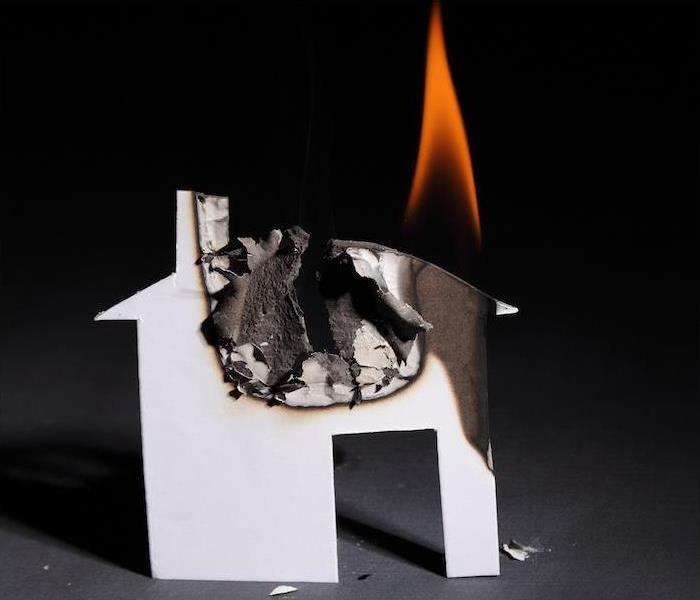The Science of Starting and Stopping Fires | SERVPRO® of West Forsyth County
2/1/2022 (Permalink)
Good teaching is all about finding ways to make complicated subjects more easily grasped, and an oft-used technique for doing that is the production of visual aids. A picture or a graph can really drive home a point or break down a difficult topic into something more manageable.
It’s precisely for that reason that fire sciences use the fire tetrahedron to simply show us that there are four equal elements to every fire, which dance together in a chemical continuum to create the awesome spectacle we are familiar with.
The tetrahedron has four equal sides, and those sides each represent something every fire must have. They also each represent, in the inverse, a way to combat any fire.
Fuel. A fire doesn’t have a gas tank, but it needs something to ingest. In a manner of speaking, the fuel source can be identified simply as the thing that’s gone or damaged after a fire.
Heat. Anything that catches fire first has to reach a point of combustion, and that means its temperature must rise to a level at which it sparks up.
Oxygen. As a fire rages, it sucks the oxygen from the air and uses it to further propagate itself. This removal of oxygen from the atmosphere also makes the air around fires difficult or dangerous to breathe.
Chemical Chain Reaction. The fuel source, rising heat and oxidation process ball up together in a lightning-fast chain reaction, which repeats without end until the fire is stopped. How is it stopped, you ask? By counteracting one of these same four elements.
Cool it. The fuel source has to stay hot in order for the fire to continue, so cooling the fuel is a powerful way to combat fire. Dumping water on the fuel (not the flames) is a way to quickly restore thermal balance to the material. Be prepared to use a lot of water, though, as some of it will sublimate and turn to steam at first.
Smother it. Fire blankets, foam and the “stop, drop and roll” technique all have one thing in common—they use the application pressure from a hard surface to suffocate the fire. Once the oxidation cycle is broken, the fire can’t proceed.
Starve it. When wildfires blaze, one reaction by fire crews is to attempt to cut off the fire from the path it’s on by purposely scorching a circle around it. In doing so, the fire eventually reaches a point where it can’t spread any farther, because there’s nothing for it to consume beyond that circle.
Interrupt the chain reaction. Gases such as halon have proven effective in stopping the cycle that has to continue in a fire in order to keep it alive. If the reaction can be broken, the fire can’t stop. The original halon formula was discontinued following the Clean Air Act of 1970, but subsequent versions are cleaner and safer for the environment.
If the fire tetrahedron makes a wreck of your home or business, we’re ready around the clock to help you recover. Contact SERVPRO of West Forsyth Country anytime for fast, thorough cleanup and recovery after a fire. It's best to contact us directly 336-946-1131.






 24/7 Emergency Service
24/7 Emergency Service
